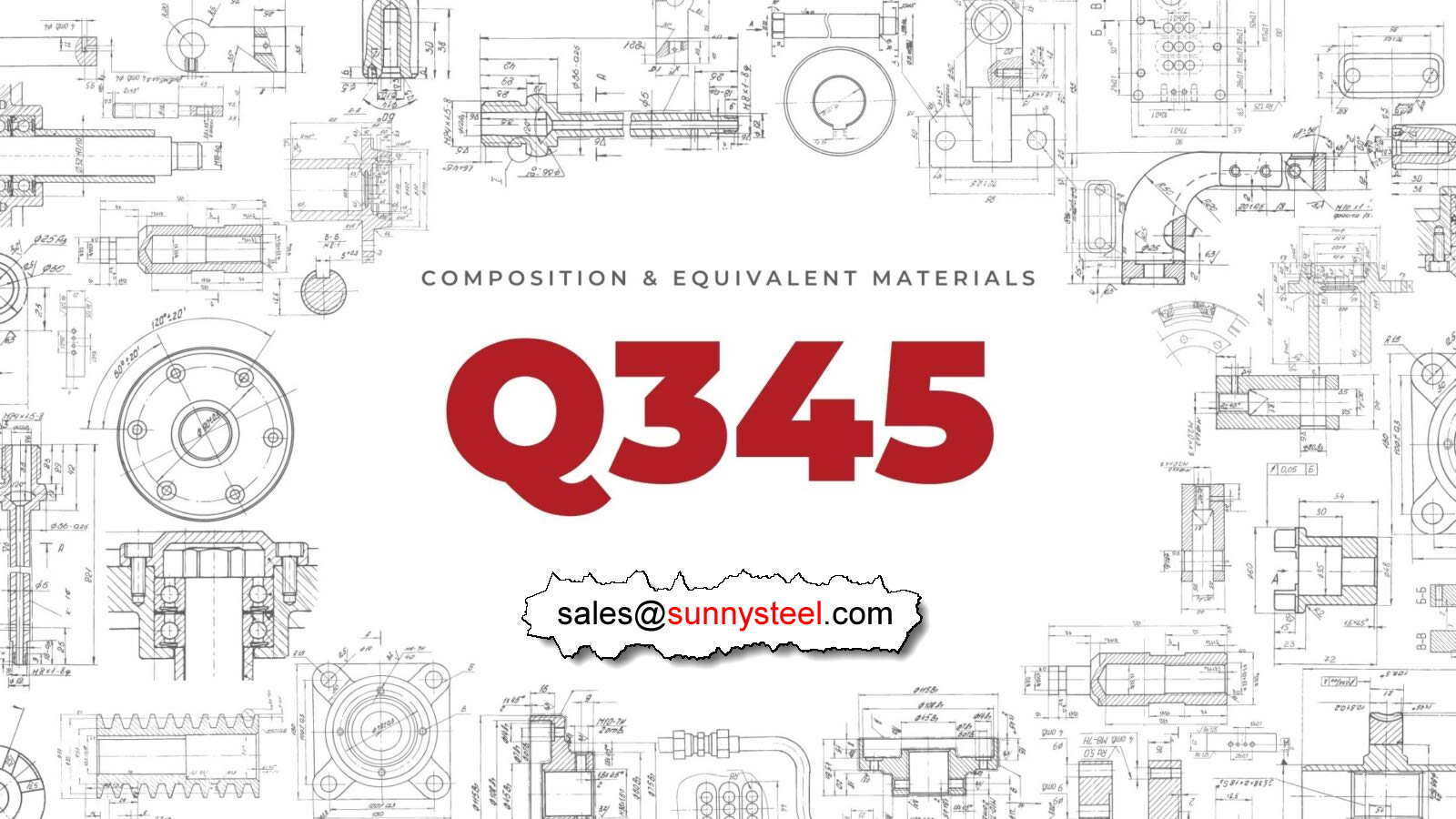Straight Pipes With Ceramic Lining
Alumina Ceramic Lined Straight Pipes prevents the pipes from wear and erosion.
Many steel material buyers purchase steel plate in China, especially high strength low alloy steel.

16Mn is a low-alloy high-strength structural steel widely used in construction, bridges, machinery, and pressure vessels. It belongs to the Chinese GB Standard (GB/T 1591-2008) and is similar to ASTM A572 Grade 50 or DIN St52-3.
16Mn is kind of C-Mn steel, its carbon content is from 0.1% to 0.25% and with some alloy elements such as manganese (Mn), silicon (Si), vanadium (V), niobium (Nb), titanium (Ti) and other elements. 16 Mn is a kind of low alloy steel with large output and the most extensive application. This kind of steel can be used as the alternative material of many kinds of steel.Today we introduce 16Mn as your reference for purchasing steel plate in China.
As a old Chinese standards, 16Mn is edited from GB 1591-1988 “low alloy structural steel”, has now been replaced by Q345. Low alloy steel Q345 steel has 5 quality grades, which are represented by from Q345A to Q345E. It can be said that Q345 steel is the substitution of old brand steel of 12MnV, 14MnNb, 18Nb, 16MnRE, 16Mn and other steel types, rather than only 16Mn steel. Their corresponding foreign maters are showed below:
| GB | ASTM | JIS | EN | DIN |
|---|---|---|---|---|
| Q345A | Grade 50 | SPFC 590 | E335(St 52 - 3) | 1.0060 |
| Q345B | Grade 50 | SPFC 590 | S355JR | 1.0045 |
| Q345C | Grade 50 | SPFC 590 | S355JO | 1.0553 |
| Q345D | Grade 50 | SPFC 590 | S355J2 | 1.0577 |
| Q345E | Grade 50 | SPFC 590 | S355NL | 1.0546 |
| Steel | C | Si | Mn | P | S | Cr | Ni | Cu | Nb | V | Ti | N | Mo |
|---|---|---|---|---|---|---|---|---|---|---|---|---|---|
| 16Mn | 0.12~0.20 | 0.20~0.55 | 1.20~1.60 | ≤0.045 | ≤0.045 | ≤0.30 | ≤0.30 | ≤0.30 | / | / | / | / | / |
| Q345B | ≤0.20 | ≤0.50 | ≤1.70 | ≤0.035 | ≤0.035 | ≤0.30 | ≤0.50 | ≤0.30 | ≤0.07 | ≤0.15 | ≤0.20 | ≤0.012 | ≤0.10 |
The chemical elements of Q345 steel are basically the same as those of 16Mn steel. The difference lies in the addition of Ti, Nb, and V micro - alloying elements. These elements can refine the grain, improve toughness, and ultimately enhance the mechanical properties of the steel. In other words, the comprehensive mechanical properties of Q345 steel are better than those of 16Mn steel, especially its low - temperature performance and allowable stress.
Standards comparison:
16Mn is a typical grade of low - alloy high - strength steel, mainly including 16Mn steel plate, 16Mn seamless tube, and 16Mn forgings. They are widely used in the manufacture of medium - and low - pressure vessels, oil tanks, as well as general mechanical structural parts.
The ratio of the main constituent elements of Q345 steel is basically the same as that of 16Mn steel. The difference is the addition of Ti, Nb, and V trace alloying elements.
Q345 steel is the replacement of old grades such as1 4MnNb, 12MnV, 16MnRE, 16Mn, 18Nb, etc., not just 16Mn. In terms of chemical composition, 16Mn and Q345 also differ. More importantly, due to the different yield strengths, there is a significant difference in the thickness - grouping size of the two steel materials. This inevitably leads to a change in the allowable stress of certain thickness materials. Therefore, it is inappropriate to simply apply the allowable stress of 16Mn steel to Q345 steel. The allowable stress should be re - determined according to the new steel thickness - grouping size.
The ratio of the main constituent elements of Q345 steel is basically the same as that of 16Mn steel. The difference is the addition of Ti, Nb, and V trace alloying elements. A small amount of Ti, V, and Nb alloy elements can refine the grains, improve the toughness of the steel, and greatly enhance the comprehensive mechanical properties of the steel. As a result, the thickness of the steel plate can be increased. Thus, the comprehensive mechanical properties of Q345 steel should be better than those of 16Mn steel, especially its low - temperature performance, which 16Mn steel lacks. The allowable stress of Q345 steel is slightly higher than that of 16Mn steel.
Q345 material and 16Mn steel are types of steel names. Their naming starting points are different. Q345 is named based on the yield strength of the steel. “Q” stands for yield strength (the initial letter of “yield”), and 345 is the value of the yield strength, which is 345 Mpa. However, 16Mn steel refers to a carbon content of 0.16% and a manganese content of 0.7% – 1.0%.
In addition, the name 16Mn steel is from the old national standard, i.e., the former name. This is because the former national standard had requirements for the manganese content of this material, specifically, the manganese content was between 0.7% – 1.0%. However, the new national standard no longer has requirements for the manganese content of this material. So, it is no longer represented by 16Mn steel and is replaced by Q345 material.
Usually, when friends ask about 16Mn steel, I explain it to them. Of course, if there are specific requirements for the manganese content of Q345 material, I also screen for customers and try to meet their requirements.
Classification by quality grade: Q345 is low - alloy steel of ordinary quality, and 16Mn is high - quality low - alloy steel.
Q345 belongs to GB/T1591 - 94 low - alloy high - strength structural steel. 16Mn belongs to JB4726 - 2000 carbon steel low - alloy steel forgings for pressure vessels. Judging from the standards, it should be clear that the two steels have different uses.
In comparison, 16Mn has stricter requirements for sulfur and phosphorus content and stricter quality requirements. 16MN and Q345 are generally the same in use, but only 16MN can be used for containers and boilers because Q345 is not listed in GB150. If you want to use it, the procedure is very troublesome. Classified according to characteristics, both are weldable low - alloy high - strength structural steel.
Q345 and 16Mn are names for steel. Their naming starting points are different. Q345 is named from the yield strength of the steel. “Q” stands for yield strength (the first letter of “yield”), and 345 is the value of the yield strength. And 16mn refers to a carbon content of 0.16% and a manganese content of (0.7% - 1.0%).
The name 16mn is the old name of the national standard, that is, the previous name. Because the previous national standard had requirements for the manganese content of this material, that is, the manganese content was between (0.7% - 1.0%), and the new national standard no longer has requirements for the manganese content of this material. So, 16mn is not used to represent it, and q345 is used instead.

When you partner with Sunny Steel, you can stop worrying about meeting deadlines thanks to our responsive and timely service. You'll also say goodbye to unnecessary shopping around. Instead, you'll get white glove service from an expert who understands your needs and can get you the materials you need quickly.
